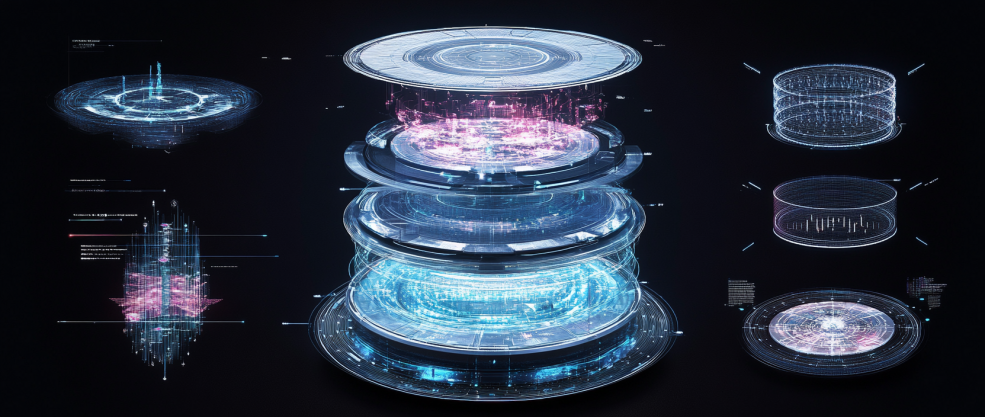In the modern world of digital technologies, blockchain takes a central place, offering innovative solutions for various industries. Among many projects, Tectum stands out—a blockchain platform claiming to be the fastest in the world. Its unique architecture and transaction processing approaches promise to redefine the capabilities of distributed ledgers. Tectum aims to overcome the limitations of traditional blockchain systems, providing high transaction speed, security, and efficiency.
- History and Mission of the Tectum Project
- Technical Architecture and Features of the Tectum Blockchain
- Proof-of-Utility Consensus Mechanism
- Advantages and Potential Applications
- Conclusion
History and Mission of the Tectum Project
The history of Tectum's creation begins with a team of developers with years of experience in advanced technologies and blockchain solutions. The project’s founder, Alex Gusev, has a professional background in developing scalable digital platforms, integrating high-load systems, and ensuring data security. The primary goal of the Tectum project is to offer a blockchain solution that overcomes current limitations such as low throughput and high transaction costs.
The core mission of Tectum is to create an innovative infrastructure capable of processing millions of transactions per second and ensuring data security across various sectors of the economy. The Tectum team is committed to developing a blockchain that will be valuable not only in the cryptocurrency environment but also in real-world business applications. This allows for the integration of Tectum into business systems to increase operational efficiency. With its unique technologies, the project aims to become a leading solution in the fields of decentralized applications (dApps), payment systems, and other blockchain solutions.
Tectum is a standalone blockchain platform, developed from scratch, independent of other existing blockchains. It uses a unique Proof-of-Utility (PoU) consensus mechanism and is capable of processing over 3.5 million transactions per second.
In the Tectum ecosystem, the primary token is the Tectum Emission Token (TET). This token is used for various purposes, including:
- SoftNote Mining: TET is required for issuing SoftNote, a unique Tectum product, representing a "transaction-free" payment system with instant payments and zero fees for the end user.
- Fee Payment: TET is used to pay network fees within the Tectum system, including fees for issuing T12-20 standard tokens and access to other Tectum/CrispMind products.
- Product Access: Holding TET provides access to various products and services within the Tectum ecosystem.
As for NFTs, Tectum supports the creation and storage of non-fungible tokens. The platform is compatible with smart contracts, allowing users to issue and store NFTs on the Tectum blockchain. For instance, there is already an NFT called SoftNote Ordinals created on the Tectum platform.
Thus, Tectum provides users with opportunities for token issuance, NFT creation, and access to various products within its ecosystem.
Technical Architecture and Features of the Tectum Blockchain
The technical architecture of Tectum is based on a three-tier system principle, ensuring high performance and scalability. This allows the system to process over 3.5 million transactions per second, significantly outperforming many other blockchains.
| Layer | Description |
|---|---|
| Main | Responsible for transaction processing and network node management. Here, transaction validation and data synchronization take place. |
| Intermediate | Serves to store transaction hashes, reducing the load on the main layer and allowing the system to process more data. |
| Lower | Contains links to original data outside the main blockchain, ensuring quick accessibility. |
This structure enables Tectum to achieve remarkable processing speed while remaining secure and efficient. The approach of using an intermediate layer not only reduces the load on the blockchain but also prevents network overloads, maintaining high performance even under high transaction volumes.
Proof-of-Utility Consensus Mechanism
Tectum uses a unique Proof-of-Utility (PoU) consensus mechanism, which is fundamentally different from the traditional Proof-of-Work (PoW) or Proof-of-Stake (PoS) methods. The main elements of Proof-of-Utility include:
- Maintaining a stable network connection;
- Creating new P2P connections;
- Validating hashes generated by master nodes;
- Energy-efficient computational processes.
This approach helps reduce energy consumption and optimize resources, making the Tectum network not only powerful but also eco-friendly. Unlike PoW, PoU requires minimal resources to maintain operations, which reduces equipment load and makes the project more sustainable for long-term development.
It is worth noting that the PoU mechanism also ensures the network’s economic efficiency, as transactions are conducted almost instantly, and users do not encounter high fees.
Advantages and Potential Applications
The high transaction processing speed and low fees make Tectum extremely appealing for numerous industries. The project has the potential to be implemented in various sectors, such as finance, logistics, public services, and many others, as its architecture and data processing speed allow it to address key challenges in business and government operations.
In the financial sector, the Tectum blockchain can provide instant payments and money transfers without delays and significant fees. This feature opens up new possibilities for international transfers, eliminates banking intermediaries, and ensures payment transparency. Thanks to its fast transaction processing, users will be able to conduct financial transactions in real-time, which is especially important for retail chains, payment systems, and e-commerce, where transaction speed and reliability play a critical role.
Additionally, using Tectum allows for the implementation of secure and decentralized solutions in the corporate sector, enhancing data exchange processes, reporting, and interaction between different departments within a single company. The platform can be used as the basis for developing corporate blockchain applications that can improve the transparency and control of business processes.
Conclusion
The Tectum project demonstrates a significant advancement in blockchain technology, offering unique solutions to the problems traditional blockchains face. With its architecture and innovative consensus mechanisms, Tectum has the potential to take a leading position by providing fast, secure, and efficient performance in the global digital technology arena.





